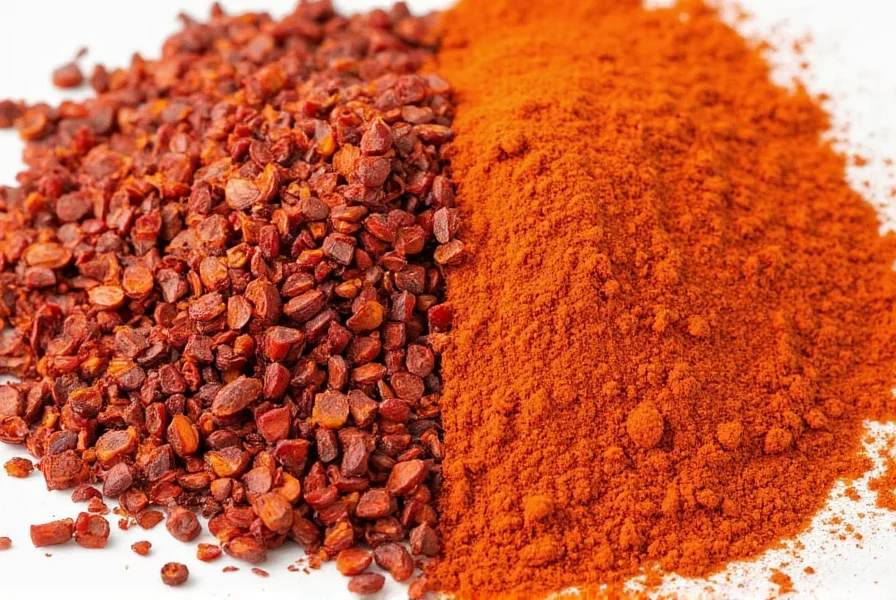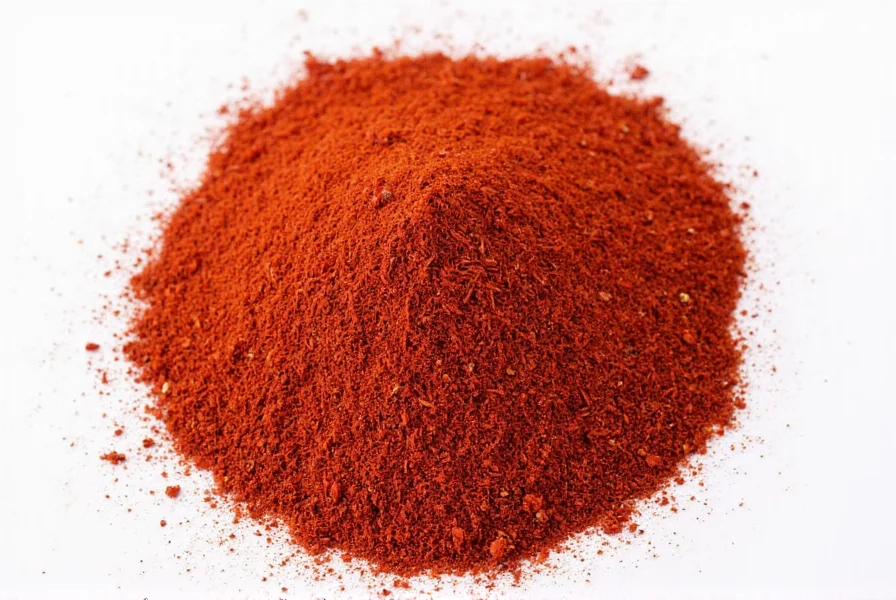Many home cooks and even seasoned chefs wonder what pepper is crushed red pepper exactly. The confusion stems from inconsistent labeling and overlapping terminology in spice aisles. Let's clarify this kitchen staple once and for all.
Understanding Crushed Red Pepper Composition
Crushed red pepper consists of coarsely ground dried chili peppers. Unlike finely powdered cayenne pepper, crushed red pepper retains visible flakes and irregular pieces. The blend typically includes:
- Cayenne peppers (primary component, 60-80% of blend)
- Red bell peppers (for color and mildness)
- Jalapeños or serranos (in some regional blends)
The exact mix varies by brand and region. Commercial blends prioritize consistent color and moderate heat, making them versatile for everyday cooking.
| Pepper Product | Primary Ingredients | Heat Level (SHU) | Texture |
|---|---|---|---|
| Crushed Red Pepper | Mixed red chilies (mostly cayenne) | 500-30,000 | Coarse flakes |
| Cayenne Pepper | 100% ground cayenne | 30,000-50,000 | Fine powder |
| Red Pepper Flakes | Similar to crushed red pepper | 15,000-25,000 | Finer flakes |
Debunking the Cayenne Confusion
One of the most persistent misconceptions about what type of pepper is crushed red pepper involves cayenne. While cayenne peppers form the backbone of most blends, crushed red pepper isn't pure cayenne. The U.S. Food and Drug Administration permits up to 20% non-cayenne peppers in commercial blends labeled as "crushed red pepper."
This distinction matters for cooks seeking specific heat levels. Pure cayenne powder delivers consistent, intense heat (30,000-50,000 SHU), while crushed red pepper provides more variable, moderate heat (500-30,000 SHU) due to its blended nature.

How Crushed Red Pepper Is Made
Manufacturers create crushed red pepper through a precise process:
- Harvest ripe red chili peppers (primarily cayenne)
- Wash and sort peppers by color and ripeness
- Air-dry or oven-dry at low temperatures (40-50°C)
- Remove stems and seeds (partially—some brands retain seeds for extra heat)
- Coarsely crush using industrial mills
- Blend with other red peppers for consistency
- Package immediately to preserve flavor compounds
The drying process concentrates capsaicin—the compound responsible for heat—while developing complex flavor notes. Properly dried crushed red pepper should maintain vibrant red color and avoid browning, which indicates flavor degradation.
Culinary Applications and Substitutes
Chefs value crushed red pepper for its crushed red pepper heat level versatility. Unlike pure cayenne, its moderate heat works well in:
- Pizza and pasta dishes (sprinkled tableside)
- Marinades for meats and vegetables
- Sauces and soups (added during cooking)
- Roasted vegetable preparations
When substituting, consider these options for what peppers are in crushed red pepper alternatives:
- For similar heat: 1:1 replacement with red pepper flakes
- For milder flavor: Paprika (1:2 ratio)
- For hotter results: Cayenne powder (use ⅓ amount)
- Whole pepper alternative: Crushed dried arbol peppers

Storage Best Practices
To maximize shelf life of your crushed red pepper ingredients, follow these guidelines:
- Store in airtight glass container away from light
- Keep in cool, dark cupboard (not above stove)
- Replace every 6-12 months for peak flavor
- Freeze for long-term storage (up to 2 years)
Fresh crushed red pepper should have vibrant color and strong aroma. Dull color or weak scent indicates diminished quality. Proper storage preserves both the heat level and nuanced flavor profile that makes this spice valuable in diverse cuisines.
Global Variations
The composition of crushed red pepper varies internationally:
- Italian: Often includes Calabrian peppers for fruity notes
- Mexican: May blend with guajillo or ancho peppers
- Asian: Frequently mixed with Korean gochugaru for color
- American: Typically cayenne-dominant with bell pepper
These regional differences explain why what pepper is crushed red pepper can vary between brands. Always check ingredient lists if you need specific heat levels or flavor profiles for authentic recipes.
Frequently Asked Questions
Is crushed red pepper the same as cayenne pepper?
No, crushed red pepper is typically a blend of dried red chili peppers with cayenne as the primary component. Pure cayenne pepper is a fine powder made exclusively from ground cayenne peppers and is significantly hotter (30,000-50,000 SHU) than most crushed red pepper blends (500-30,000 SHU).
What peppers are actually in crushed red pepper?
Most commercial crushed red pepper contains primarily cayenne peppers (60-80%), with additional red peppers like bell peppers, jalapeños, or serranos making up the remainder. The exact blend varies by manufacturer and regional preferences, which explains differences in heat level and flavor between brands.
Can I substitute paprika for crushed red pepper?
Yes, but with adjustments. Sweet paprika provides color without significant heat, so use twice as much paprika to match the visual impact, but expect much less spiciness. For heat, combine 1 part cayenne with 3 parts paprika. Smoked paprika makes an excellent substitute in dishes where you want both color and a subtle smoky flavor.
Why does my crushed red pepper vary in heat between batches?
Natural variation in chili pepper heat occurs due to growing conditions, soil composition, and weather patterns. Commercial blends mix peppers from multiple sources to maintain consistency, but some variation is inevitable. This explains why crushed red pepper heat level can differ between brands and even between batches from the same manufacturer.
How can I make my own crushed red pepper blend?
Create a balanced blend by combining 3 parts dried cayenne peppers, 1 part red bell peppers, and ½ part jalapeños. Dry the peppers completely, remove most seeds (keep some for extra heat), then coarsely crush using a mortar and pestle or food processor. Store in an airtight container away from light for best results.











 浙公网安备
33010002000092号
浙公网安备
33010002000092号 浙B2-20120091-4
浙B2-20120091-4